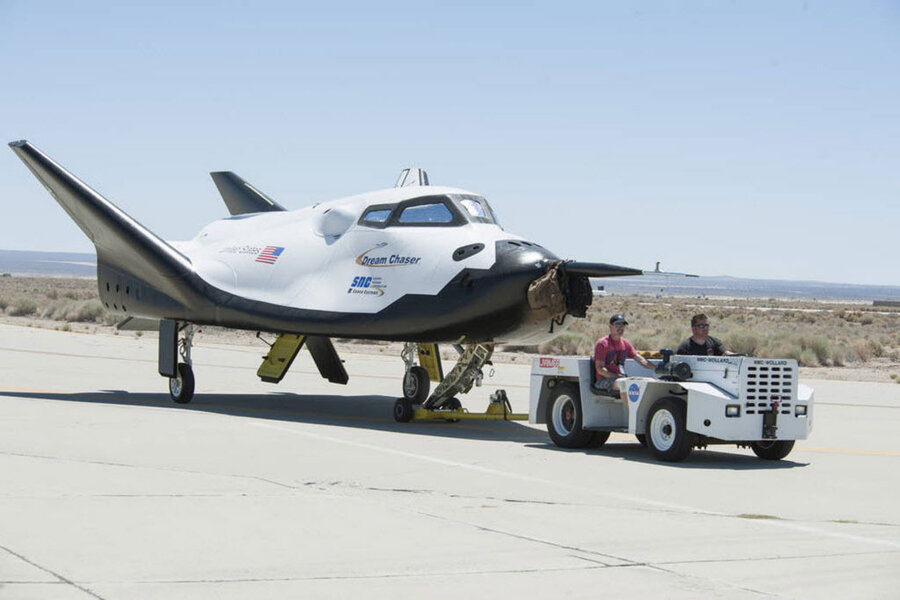What Sierra Nevada's Dream Chaser brings to NASA's fleet of space taxis
Loading...
In light of recent launch failures by SpaceX and Orbital ATK rockets, NASA announced on Thursday that it would add a third private company to its International Space Station supply crew.
Sierra Nevada Corporation's Dream Chaser space plane is unique, because it can land on a traditional airline runway, while most cargo ships splash down in the ocean or burn up upon reentry. SpaceX has been working on a rocket that can touch down on land and return to space, but that effort is still in the experimental stage, with just one successful landing under its belt.
Station program manager Kirk Shireman said that air traffic controllers would never allow the shuttles to land at major international airports. Instead, he said, "Most likely, we'll land in Florida, right close to where our facilities are."
The decision to add Sierra Nevada to the mix of NASA's space taxi providers likely stems from recent launch accidents suffered by SpaceX and Orbital.
Orbital experienced a launch explosion in Wallops Island, Va., the company’s former launch site, in 2014. The company is currently using the United Launch Alliance’s Atlas V rocket until it solves problems with its own Antares rocket. SpaceX has also been out of commission since a launch failure last summer, although it should resume supply flights in the coming months.
NASA declined to comment on the total cost of the three contracts, which will cover about four supply runs per year. Mr. Shireman told reporters that the companies were selected with price in mind and that the total costs of the flights was expected to be less than the proposed maximum of $14 billion. Each company will fly at least six flights between 2019 and 2024.
The first resupply contracts were awarded in 2008, before NASA grounded its own shuttles for good in 2011. SpaceX flew its first commercial resupply flight in 2012.
Sierra Nevada also competed in a 2014 bid to carry astronauts to the International Space Station, but lost to SpaceX and Boeing. To win this contract, Sierra Nevada beat out both Boeing and Lockheed-Martin.
The Dream Chaser shuttle is not only intriguing due to its unique design, but for its implications for the scientific research community. The shuttle’s ability to land like a conventional airplane will expand research opportunities for biologists.
"There are a lot of reasons to use animal studies to look at things like balance and sensory motor effects (of microgravity), and those are going to change so rapidly on return that we need to have the animals back right away,” station chief scientist Julie Robinson told Reuters.
Sierra Nevada Vice President Mark Sirangelo says he is enthusiastic about the implications of the Dream Chaser’s design. "Within a few short years, the world will once again see a United States winged vehicle launch and return from space to a runway landing,” he says.
This report contains material from Reuters and the Associated Press.







